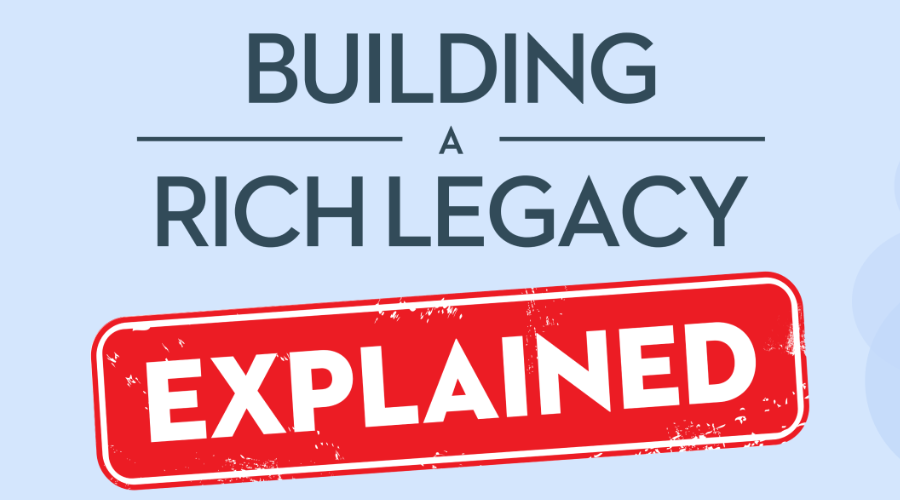Tips and best practices for a financially secure retirement
If you are on the cusp of your golden years and getting ready to hang up your boots, you may have several pertinent questions, such as:
- How much do I need to save for retirement?
- Have I saved enough? How long will my retirement savings last me?
- Do I need to put in a few more years of work in order to reach that magic number?
While many Canadians estimate that the average retirement savings should be $756,000, the ideal retirement savings by age is very different. Each generation has their own views, priorities and lifestyle preferences. For example, according to CIBC’s poll findings:
- Millennials (18 to 34) think they require an average retirement savings of $917,000
- Generation X (35 to 54) believe the number is $842,000
- Baby boomers (55 and older) think they require retirement savings of just $518,000
Unfortunately, 90% of the Canadians who are currently retired, or on the cusp of retirement, do not have a proper plan that describes their retirement lifestyle, or spells out their income needs. Moreover, only 38% of working age people are currently saving for retirement.
So why is saving for retirement in Canada so hard? As little as 50 years ago, most working Canadians could look forward to their retirement knowing that an employer’s pension, boosted by the Canada Pension Plan, would keep them comfortable in their golden years.
Today, we are dealing with a number of issues that are increasing the gap between savings and spending.
- Quickly disappearing company pension plans
- Skyrocketing costs of housing, healthcare and children’s education
- Low interest rates and significantly lower investment returns
- Increased longevity, leading to longer retirement
Here we will take a closer look at each of these aspects and explore options for reducing expenses as well as strengthening your retirement finances.
Saving for retirement? Don’t let rising costs eat into your funds
Every other day, a retirement expert, financial planner, or money-savvy family member will remind you of how many hundreds of thousands of dollars you need to save to ensure a financially secure retirement. The reality is that a combination of several external factors can cause a deep rift between your spending and saving patterns.
Here are a few aspects that may be eating into your retirement funds:
- Downfall of company pension plans: A few decades ago, company pension plans more than covered retirement finances, keeping Canadians financially secure and comfortable through their golden years. In the late 1970s, around 54% of the male working population and 32% of the female working population across private and public sectors was covered under a company pension plan. Since the early 2000’s, that number has come down to approximately 37% for both genders. In fact, in the private sector, only 20% of the working population receives a company pension today.
Over time, the increasing costs, funding liabilities and greater complexities in pension rules has led most companies to phase out the extravagant Defined Benefit (DB) pension. While some companies did away with pension schemes entirely, others replaced them with the more moderate Defined Contribution (DC) pension plans. In this case, the employer deducts a part of the contribution from the employees’ income, which means you will not only take home less, but you also do not enjoy security on the payout amount. Without the cushion of a generous company pension, also called Registered Pension Plan (RRP), most Canadians have to contribute to their own investment and savings plan to finance their retirement years.
- Slowdown in growth of savings: In recent years, savings accounts and fixed income investments have not brought in the same returns as seen a few decades ago. In fact, many fixed income investments, like savings accounts, GICs and bonds struggle to keep up with inflation. In order to improve their investment portfolios, many Canadians are adding a substantial amount of equity-based investments to their mix. However, the potentially higher returns of equity instruments also come with a fairly high risk and are more susceptible to changes in value due to any sudden fluctuations in the market.
- Rising cost of housing and healthcare: While there have been several boom and bust cycles, property prices in Canada have seen an exponential increase over the last 50 years. Combined with high interest rates and bigger down payments, overall housing costs have far exceeded past estimations. For example, in Toronto, the average price of a home increased from approximately $100,000 in 1985 to $567,000 in 2015, which is an annualized increase of 5.65% over the past 30 years. Salaries and wages, however, have not increased anywhere near that figure. Payments on such expensive properties are taking income away from potential retirement savings.
- Skyrocketing costs of healthcare: The Canadian healthcare cost increase story is no different than the housing cost inflation. Between 2004 and 2014, medical expenses rose by 54%. In fact, without private insurance coverage, Canadians spend over $5,000 per year on out-of-pocket medical expenses, including prescription drugs, mobility aids and caregiving costs. Higher healthcare costs are pushing up the minimum funds that you need for a secure and comfortable retirement.
- Kids’ education is expensive: Many parents contribute to their kids’ Registered Education Savings Plan (RESPs) from the day the child is born. Yet, the amount you accumulate may fall short, especially if you don’t want your children to graduate with significant student debt. According to Stats Canada, undergraduate tuition fees have risen from $4,558 in 2007/2008 to $6,618 in 2017/2018, an increase of almost 45% in the last decade. The greater the contribution you may make to your kid’s education fund, the potential higher the stress on building sufficient retirement funds.
- Improved longevity, longer retirement: Thanks to better healthcare and smart lifestyle choices, Canadians live an average of almost 83 years. A few decades ago, the healthy company pension funds, combined with lower life expectancy meant a financially secure retirement that lasted around 5 to 10 years. Today, with improved longevity, your retirement may last anywhere between 20 to 30 years, which means you need to account for additional funds to sufficiently cover your golden years.
Whether it is pension plan changes, property purchase or maintenance, medication and healthcare for yourself or your dependents, children’s education, or existing loans and debts, each factor influences your ability to secure sufficient retirement finances in Canada.

Tips to reduce expenses and save for retirement
Have you envisioned what kind of retirement lifestyle you desire? From gearing up and making the transition to retired life, to settling into a new lifestyle, and enjoying your golden years, visualizing each step will help plan how much you should be saving for retirement in Canada.
Strategizing for a happy retirement includes several aspects. You need to consider your future lifestyle and preferences, and identify all the possible sources of income available to you. In addition to your employment pension, Canada Pension Plan (CPP), personal savings, and other benefits, such as Old Age Security (OAS), you may have to rely on a comprehensive financial strategy to build up a healthy retirement fund:
- Defer collection of CPP: If you continue working beyond 65 years of age, you can start collecting your CPP benefits late. For every year of deferral, you will receive 42% more pension than if you took it at 65 years of age.
- Clear your debts: Pay off your debts and cut back on unnecessary expenses, wherever possible.
- Put your personal savings on auto-pilot: Put aside additional funds each month into your personal retirement savings. Follow one of the common benchmarks, such as save 10% of your gross income, or save $20 for every dollar in income that you need for retirement (Rule of 20). Don’t forget to factor in inflation while deciding how much to save for retirement.
- Start saving early: Our spending and savings habits change with age, and each life stage influences our ability, as well as willingness to save versus spend. However, if you start saving early, you won’t need to put aside a substantial portion of your income, yet you will be able to choose investment options that are appropriate for that life-stage. Even if you save less each month, your money will have more time to earn a larger amount of compounded interest.
- Invest for the long term: Explore various investment tools that can help your money grow, and revisit your plans annually. From Registered Retirement Savings Plans (RRSPs) and Tax Free Savings Accounts (TFSAs), to mutual funds and other workplace savings plans, choose wisely and invest smartly.
Finance your retirement your way
With all these factors combined, many Canadians are struggling to save the funds they need for a financially secure retirement. One way to boost your retirement income is to take out a reverse mortgage. The CHIP Reverse Mortgage® allows you to access up to 55% of your home’s value and turn it into tax-free cash. You maintain ownership and control of your home, without the obligation to make monthly mortgage payments, until you choose to move or sell. Cashing in on your home’s equity could be the difference between struggling through retirement and living your golden years the way you envisioned.
Want to know how the CHIP Reverse Mortgage® can help you finance your retirement your way? Call us at 1-866-522-2447 today.































